Landing Page Optimization For SEO
Here’s the deal when it comes to landing page optimization.
You could hire the world’s best copywriter to give you the most compelling copy anyone has ever read. But that wouldn’t be enough to lock in the conversions you need to grow your business.
To do that, you need to go a step further and make your landing page SEO-friendly through a process called landing page optimization.
But why?
Two words: Targeted. Traffic.
After all, if your fantastic landing page never gets visitors, it may as well not exist. And if you don’t have the budget for a paid ad campaign, you’ll never get that traffic. In the end, that means you lose out on a big chunk of change for hiring that expensive copywriter.
But here’s the good news — we’re going to show you how landing page optimization with SEO in mind can generate organic (read: free) traffic for your website so you can turn more visitors into leads.

What Is An SEO Landing Page?
An SEO landing page is intended to show Google that your content is valuable to its users.
By following on-page SEO best practices and implementing landing page optimization, you can easily satisfy Google’s algorithm and be on your way to ranking your homepage (and site) higher.
Like internal linking, landing page optimization is something that often goes overlooked. That’s because landing pages are usually temporary campaigns meant to promote a product or service by encouraging visitors to take action (i.e., convert).
But here’s the other deal when it comes to landing pages.
Many people, businesses, etc., take their pages down because they see it as a short-term campaign. But in reality, continually tweaking it with landing page optimization can be a long-term and versatile strategy that helps you achieve several goals.
It all comes down to how much value your page can provide your visitors — and in turn, Google. And on-page SEO is how you supersize your value and deliver it on a silver platter.

Why Is Landing Page Optimization Important For SEO?
What does a magician, a chef, and Google have in common? They never share their secret.
While Google offers plenty of information about how to improve on-page SEO for landing page optimization, they have yet to give up the goods when it comes to their algorithm (though that hasn’t stopped us from trying to crack that code).
Google continuously updates their algorithm as they learn more about their users and what they want. And while that’s good for users, it means marketers have their work cut out for themselves trying to keep up.
There was once a time when you could get away with sneaky black hat techniques such as keyword stuffing and link farming. Those moves were enough to get you to the top of the search results — but it also crowded the first page with useless junk.
You should understand that Google’s primary service (read: purpose) is providing its users value. To avoid losing customers, it started cracking down and updating its algorithm to prevent garbage sites from ranking.
As a result, many of these sites never saw another visitor — mostly because they never appeared high enough in the search results to get seen.
Google’s efforts to provide premium value gave it the reputation of being a users’ go-to source for high-quality content. Now, people use Google because they know they’ll be able to find the content they need.
Because Google penalizes sites that use black-hat techniques and rewards white hat tactics (like landing page optimization) with higher rankings, it’s all the more important to understand these methods.
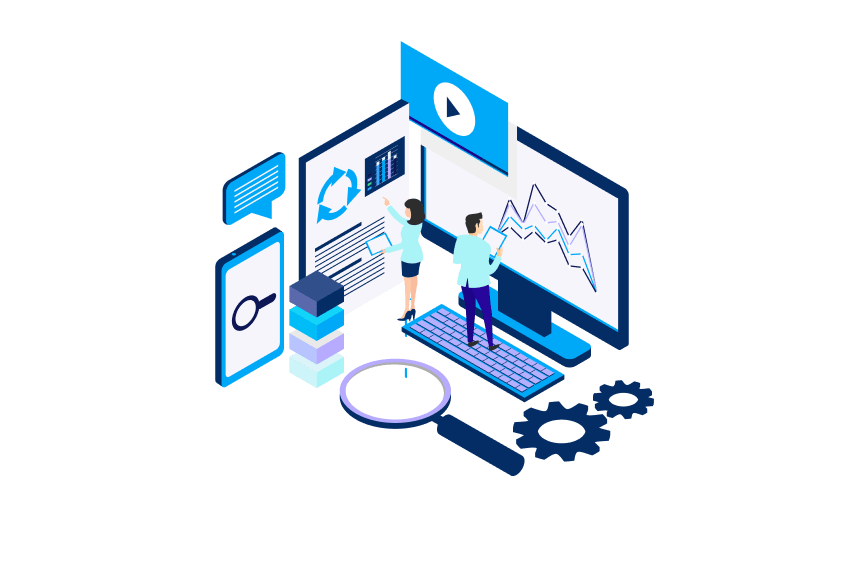
Landing Page Optimization And Conversion Rate For SEO
Consider this: Only 22% of companies are satisfied with their conversion rates.
The average website’s conversion rate is around 2.35%.
Landing page optimization, SEO, and conversion rate optimization (CRO) go-hand-in-hand. If you want to improve one, you need to understand the rest.
What Is A Conversion Rate?
Conversion rate tells you how many times your site’s visitors completed a desired action (converted) by the number of unique visitors that come to your site. This figure gives you a better idea of where you stand so you can identify areas of improvement that can be worked on through landing page optimization.
The purpose of CRO is to adjust your site and its content to get more visitors to convert.
CRO differs from conversion optimization for SEO or even PPC. The former occurs after somebody visits your website. On the other hand, the latter zeroes in on:
✓ Who comes to your site after clicking on it in the organic search results
✓ The number of clicks you receive
✓ Which keywords generate traffic for your site
Okay, but what does conversion optimization have to do with SEO and landing page optimization?
Conversion optimization isn’t just about reaching bigger and better numbers, it’s about improving users’ experience on your site. When you do that, people are naturally more inclined to convert. It gives you the data you need to improve user experience — and subsequently, your conversion rate.

Conversion Rate Optimization And SEO
Here’s where SEO and CRO converge.
We all know that the purpose of SEO is to rank your site higher so you can bring in more leads. It doesn’t matter if you’re getting more traffic than Amazon, but if your visitors aren’t converting, you need to shift gears into attracting better-quality leads.
Enter CRO and its trusty sidekick, landing page optimization.
While SEO and Conversion Optimization get the traffic to your site, CRO turns those visitors into clients, customers, fans, or whatever else you want them to be. That’s because conversion rate optimization and landing page optimization go hand in hand.
Conversion optimization gives you crucial data and insights into what’s working and what isn’t. It allows you to strategize about which keywords you want to be targeting for your SEO campaign and has the power to influence search queries. Generally speaking, there are three kinds of queries, and each one has a different kind of user intent at its heart:
✓ Navigational query: Driven by the intent to navigate to a specific website, this kind of query has users searching for the name of a website.

✓ Informational query: Driven by the need to be more informed, this kind of query has users searching for subject-specific information.
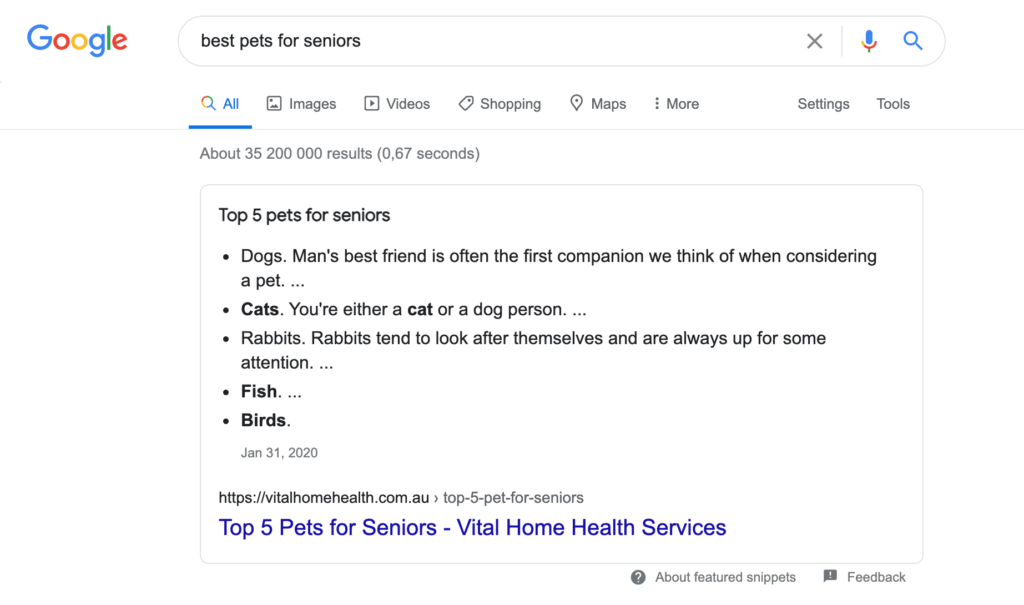
✓ Transactional query: Driven by shopper’s desire, this kind of query has product-or service focused search terms.

These overarching queries and their associated intent guide landing page optimization and help you answer the following questions as you begin the process:
✓ What conversion action should you focus on, based on your promotion, product, or offer? For instance, are you launching a new product for which you want to promote awareness? Or are you hoping to drive sales?
✓ What conversion action is most likely to initiate a conversion? For instance, a video view of a product demonstration or a newsletter signup?
✓ How can you encourage visitors to take action? For instance, if you’re looking to build a repository of leads for remarketing campaigns, would it help to provide some upfront value in exchange for their email addresses?
If you keep these notes in mind, your landing page optimization efforts should be much smoother.
Landing Page Content Optimization For SEO
Whether you want more sales, downloads, testimonials, follows, or something else, your landing page is the place where you get your visitors to take action. Content optimization clarifies the page’s call to action (CTA) and makes it more engaging, compelling, etc. (this is where that top-notch copywriter comes in).
Landing page optimization also boosts the overall quality of your content, thereby increasing the probability of conversion. The more you improve on-page SEO, the more landing pages you’ll have for high-converting visitors.
To optimize your landing page copy:
✓ Include relevant keywords in the copy
✓ Write meta and title tags
✓ Add relevant internal and external links to appropriate anchor text
✓ Optimize headlines for higher click through rates (CTRs)
✓ Include images, gifs, or videos for better engagement (and optimize alt text)
To show you how landing page optimization works, imagine you’re a smartphone carrier that wants to promote a sale. To do that, you would tap into product-related user search queries and target those who are in the market for a new phone. Those users have high intent and are more likely to convert.
You can leverage that intent further by understanding what they’re primarily searching for (e.g., “buy smartphone” or “buy iphone 12”). And then you implement landing page optimization by using the relevant keywords in the copy, meta tags, and title.

SEO Landing Page Optimization Guide
The average landing page has a bounce rate between 70% to 90%. Yikes!
But with a little bit of SEO and landing page optimization, you can have a landing page that brings in more traffic and conversions.
Use A Custom URL If You Use A Content Management System (CMS)
When you use a CMS like WordPress to publish a page, you can choose whether you want to post to the service’s subdomain. For example, on WordPress, you can post the page to a custom domain (www.everydaydreamers.ca/services). You can also leave “.wordpress.com” in the URL, so WordPress hosts it temporarily (www.everydaydreams.wordpress.com).
However, this runs the risk of misleading potential leads by distorting your brand consistency and losing any domain authority your site has accumulated over time. But if you post landing pages to your site’s domain, you can enjoy a little (but no less important) boost to your rankings.
Find Relevant Keywords
Keyword research is the foundation of every aspect of SEO, including landing page optimization. This step is where you find terms you want to appear in for specific searches. Keyword research can appear daunting and downright overwhelming, but the more you do it, the more skilled you’ll become.
Here’s the Cliffnotes version of keyword research:
List phrases or words related to your landing page (including long-tail keywords) people might use if they were to search for your offering. For example, imagine you run a nursery in Portland, and you’re making a landing page to get people to sign up for your gardening classes.
Rather than trying to rank for general phrases like “gardening design” or “gardening courses,” you would aim for “garden design classes in Oregon” or something even more specific like “garden design classes in Portland.”
You have a significantly higher chance of ranking for long-tail keywords and getting a better ROI on your landing page optimization efforts.
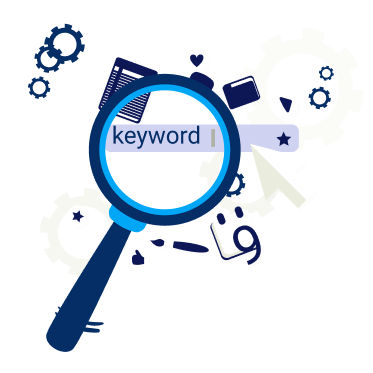
Add Keywords In Relevant Areas
After you have your keyword list, the next step in landing page optimization is sprinkling them (strategically!) throughout your page, which means adding them to:
✓ Title tags
✓ Meta descriptions
✓ Header
✓ Tags
✓ Image file names and alt text
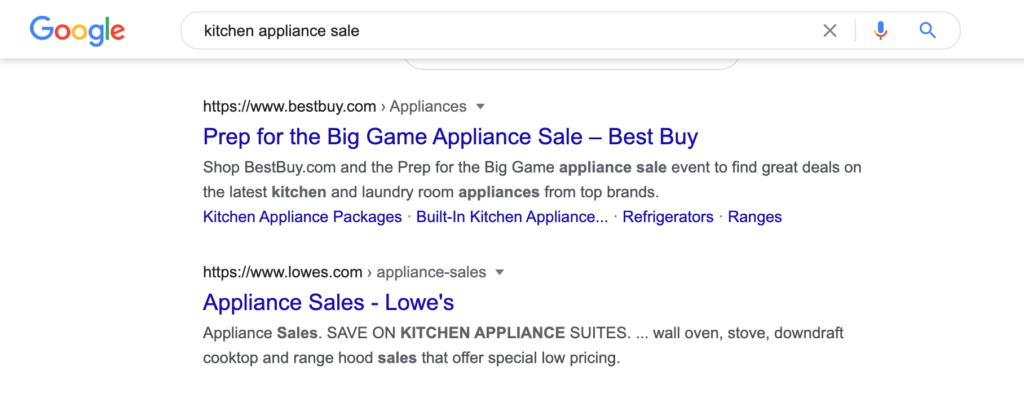
And, of course, the copy itself. However, make sure you stick to a keyword density of 2%, or Google will penalize you for keyword stuffing.
Write High-Quality Content
Good writing isn’t just for blogs; it’s just as crucial for landing page optimization. Even though landing page copy is usually salesy — its purpose is to encourage visitors to take action, after all — that’s no excuse for garbage writing.
You can still offer readers value — in fact, you should focus on that because upfront value makes them more willing to download your white paper, buy your new product, or sign up for your newsletter. Remember, landing page optimization is all about how you can serve your visitors, not the other way around.
While we’re talking about content, let’s touch on length.
Generally, Google and other search engines prefer long-form content (stuff that’s 700 to 2,000 words) because their users are likely to gain the most from rich, informational content. Recent trends have shown that more people are interested in reading longer articles because they can find as much information as possible about a specific topic.
We bring this up because landing pages are traditionally short, sweet, and to the point. But when you consider that top-ranking pages are usually long-form posts, you might not know what to do.
The truth is, you shouldn’t focus too much on length during landing page optimization. If you only need 500 words to make your point and give visitors something meaningful, then leave it at that. Don’t write 1,500 more words if it’s just going to be fluff.
On the other hand, if your promotion requires 2,000 words, your landing page should have 2,000 words. If you’re concerned that the length will turn visitors off, then check out these coding tactics. You can add these to the back end of your page and let you tuck content away under a collapsable headline (this is a useful landing page optimization tip to remember).
The code below is an example of a basic collapsible headline from W3Schools, and it’s a great method to incorporate a long-form landing page without scaring off your visitors.

As long as you keep quality in mind, your landing page optimization efforts will pay off.

Nab Backlinks For Your Landing Page
Backlinks are an off-page SEO practice that we’ll explain more in-depth in another post. For now, we’ll talk about them in the context of landing page optimization.
First, backlinks are one of the best (if not the best) strategies to improve your organic rankings. That’s because they’re essentially a vote of confidence from other websites that vouch for your authority and credibility — two pillars of Google’s ranking algorithm.
But how do you get people to link to your landing page, especially if you’re a small site?
You have a few options, but a blend of high-quality content and a focused outreach strategy is always your best bet. To do that:
✓ Publish original, researched-backed content that provides value
✓ Research different influencers, experts, or thought leaders in your industry who would enjoy your content
✓ Connect with these individuals and ask them to share your post with their followers
Of course, there’s a lot more to backlink building than these three steps. But for the sake of landing page optimization, that’s the gist. It also helps to start small — reach out to bloggers and review their blogrolls to find more potential contacts. As you engage with more people in your niche, the easier it will be to work your way up.
NOTE: When looking for relevant sites that can link to your landing page, try to focus on websites with higher domain authority. SEMrush, Moz, and other online tools can give you this information (and even a list of prospects). Sites whose domain authority is lower than yours will actually end up hurting you.
For example, say Krispy Kreme, which has a domain authority score of 64, links to local donut shop 49th Cafe.

This would actually benefit 49th Cafe, which has almost half the authority as Krispy Kreme. That’s because when one website externally links to another, it passes along some of its domain authority, which is also known as link juice. Because Krispy Kreme has so much more domain authority, linking to 49 Cafe could actually hurt its score.

Of course, linking to 49 Cafe’s website one time won’t make a difference in either site’s score. However, if Krispy Kreme made a habit of linking to these smaller sites, it could start to slip in its authority. Conversely, if more high-domain sites started regularly linking to 49 Cafe, its domain authority (and rankings) would increase.
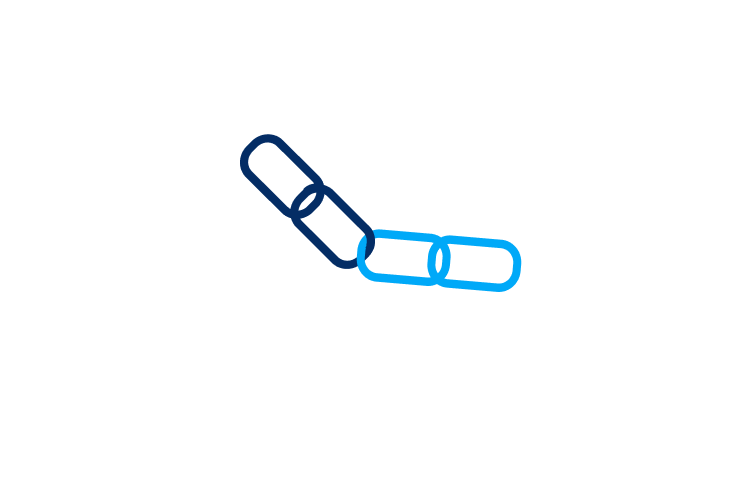
Keep Your Landing Page Up
Remember that we mentioned businesses often treat landing pages as a short-term promotion? Rather than removing it once your campaign runs its course, you should leave it up, use landing page optimization, and watch it generate better search rankings and traffic.
Here’s something to think about: whenever you remove a landing page, you’re essentially undoing any SEO gains you made and starting all over again. But by leaving it up year-round, you can potentially reach the top page of Google for that targeted keyword.
Of course, you should update your page to reflect your current offerings, including landing page optimization factors like title tag and meta description. This way, when visitors click on your site because they expect to find an online promo code, they don’t see a page full of expired or outdated information.
Optimize For Speed
Speed is just as important to landing page optimization as content quality. After all, who’s going to read it if no one sticks around for the page to load?
Consider this: Kissmetrics found that 47% of visitors bounce if a page doesn’t load within two seconds, while 40% dip after three.
Site speed is a big part of user experience and one of the very few SEO ranking factors Google has outright verified. That means you cannot ignore it during landing page optimization. Google PageSpeedInsights is an excellent tool to determine where you stand and identify areas of improvement.
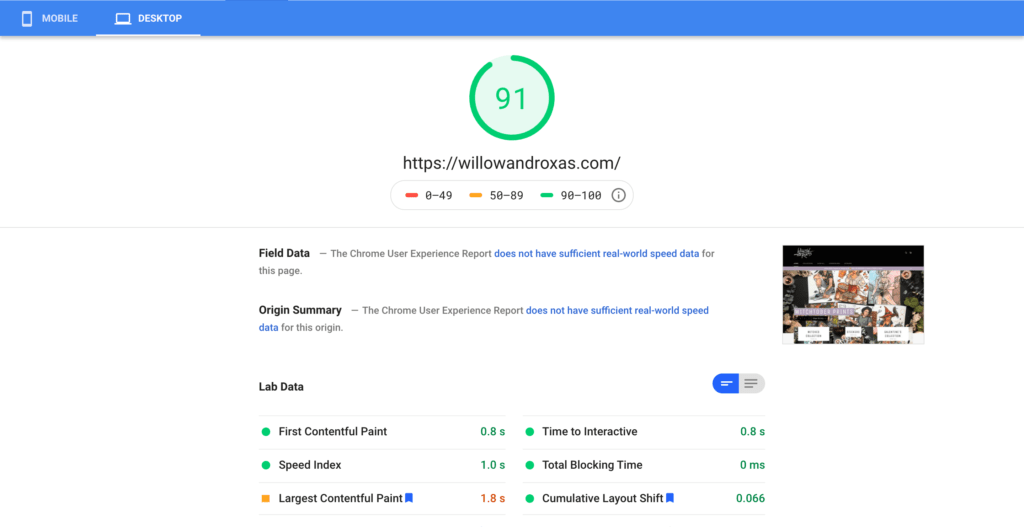
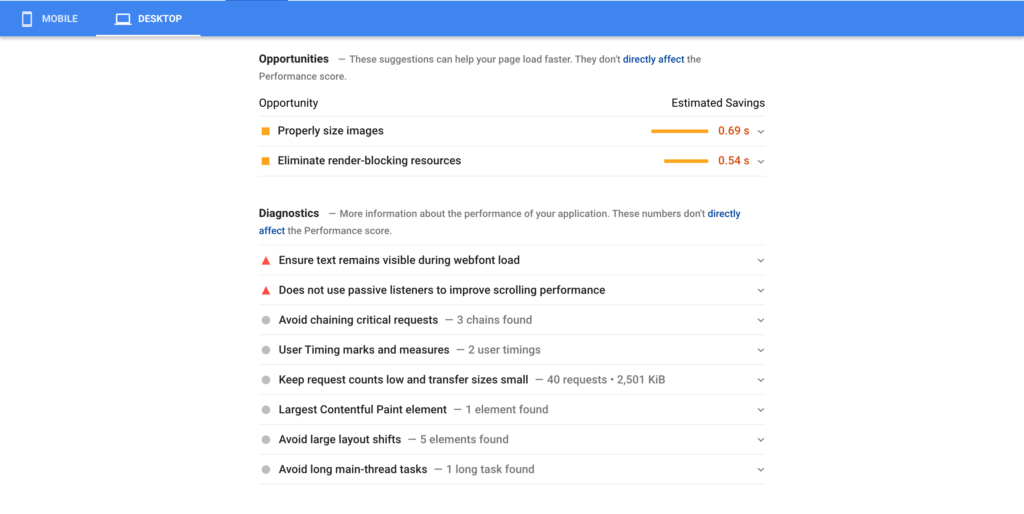
Besides that, you can speed up load times and improve landing page optimization by:
✓ Adding smaller images that don’t sacrifice quality
✓ Using a faster web host
✓ Turning off plugins or extensions not used on the landing page
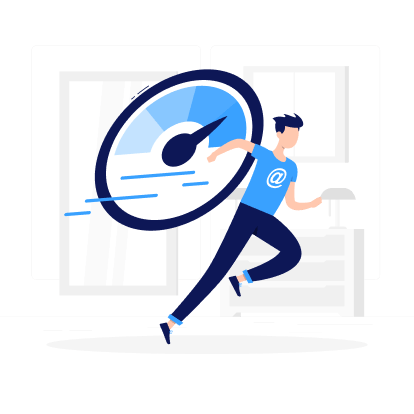
Make Your Landing Page Easy To Share
Google explicitly said that likes, shares, retweets, and reposts don’t affect SEO health. But that doesn’t mean you should overlook social media in your landing page optimization efforts. Au contraire — shareability is a key way to build backlinks, boost your authority, and get your landing page in front of people.
If your landing page is full of valuable information, people will be more willing to share it. So, take advantage of social proof and add social media share buttons on the “Thank You” page after your lead took action and converted. These buttons make it easier for them to tell more potential leads in their network about your offer.
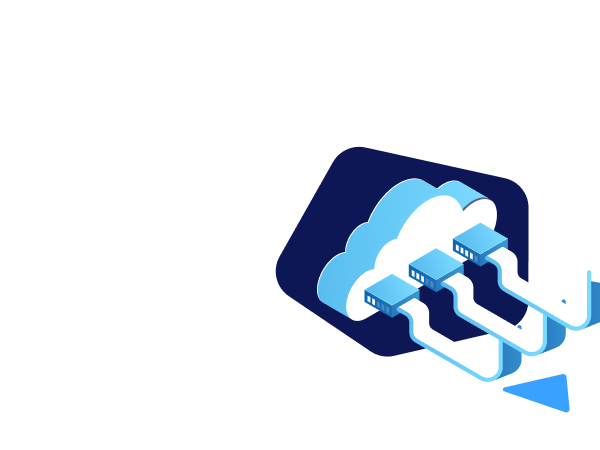
Bottom Line
Most landing pages have high bounce rates or simply don’t convert, but by improving user experience and offering valuable content via landing page optimization, you can make sure that doesn’t happen to you.
If you could use some landing page optimization tips to point you in the right direction, we’re happy to help — just send us a message.
Sources
- “Conversion Rate Optimization [2021 CRO].” Moz, moz.com/learn/seo/conversion-rate-optimization.
- NineSEO, Volume. “Conversion Optimization & SEO: Traffic without Conversion Is a Traffic Accident.” Volume Nine, 9 July 2019, www.v9digital.com/insights/conversion-optimization-and-seo-traffic-without-conversion-is-a-traffic-accident/.
- Vrountas, Ted. How to Build SEO-Friendly Landing Pages, 1 July 2020, instapage.com/blog/seo-friendly-landing-pages.
Landing Page Optimization For SEO
Here’s the deal when it comes to landing page optimization.
You could hire the world’s best copywriter to give you the most compelling copy anyone has ever read. But that wouldn’t be enough to lock in the conversions you need to grow your business.
To do that, you need to go a step further and make your landing page SEO-friendly through a process called landing page optimization.
But why?
Two words: Targeted. Traffic.
After all, if your fantastic landing page never gets visitors, it may as well not exist. And if you don’t have the budget for a paid ad campaign, you’ll never get that traffic. In the end, that means you lose out on a big chunk of change for hiring that expensive copywriter.
But here’s the good news — we’re going to show you how landing page optimization with SEO in mind can generate organic (read: free) traffic for your website so you can turn more visitors into leads.

What Is An SEO Landing Page?
An SEO landing page is intended to show Google that your content is valuable to its users.
By following on-page SEO best practices and implementing landing page optimization, you can easily satisfy Google’s algorithm and be on your way to ranking your homepage (and site) higher.
Like internal linking, landing page optimization is something that often goes overlooked. That’s because landing pages are usually temporary campaigns meant to promote a product or service by encouraging visitors to take action (i.e., convert).
But here’s the other deal when it comes to landing pages.
Many people, businesses, etc., take their pages down because they see it as a short-term campaign. But in reality, continually tweaking it with landing page optimization can be a long-term and versatile strategy that helps you achieve several goals.
It all comes down to how much value your page can provide your visitors — and in turn, Google. And on-page SEO is how you supersize your value and deliver it on a silver platter.

Why Is Landing Page Optimization Important For SEO?
What does a magician, a chef, and Google have in common? They never share their secret.
While Google offers plenty of information about how to improve on-page SEO for landing page optimization, they have yet to give up the goods when it comes to their algorithm (though that hasn’t stopped us from trying to crack that code).
Google continuously updates their algorithm as they learn more about their users and what they want. And while that’s good for users, it means marketers have their work cut out for themselves trying to keep up.
There was once a time when you could get away with sneaky black hat techniques such as keyword stuffing and link farming. Those moves were enough to get you to the top of the search results — but it also crowded the first page with useless junk.
You should understand that Google’s primary service (read: purpose) is providing its users value. To avoid losing customers, it started cracking down and updating its algorithm to prevent garbage sites from ranking.
As a result, many of these sites never saw another visitor — mostly because they never appeared high enough in the search results to get seen.
Google’s efforts to provide premium value gave it the reputation of being a users’ go-to source for high-quality content. Now, people use Google because they know they’ll be able to find the content they need.
Because Google penalizes sites that use black-hat techniques and rewards white hat tactics (like landing page optimization) with higher rankings, it’s all the more important to understand these methods.

Landing Page Optimization And Conversion Rate For SEO
Consider this: Only 22% of companies are satisfied with their conversion rates.
The average website’s conversion rate is around 2.35%.
Landing page optimization, SEO, and conversion rate optimization (CRO) go-hand-in-hand. If you want to improve one, you need to understand the rest.
What Is A Conversion Rate?
Conversion rate tells you how many times your site’s visitors completed a desired action (converted) by the number of unique visitors that come to your site. This figure gives you a better idea of where you stand so you can identify areas of improvement that can be worked on through landing page optimization.
The purpose of CRO is to adjust your site and its content to get more visitors to convert.
CRO differs from conversion optimization for SEO or even PPC. The former occurs after somebody visits your website. On the other hand, the latter zeroes in on:
✓ Who comes to your site after clicking on it in the organic search results
✓ The number of clicks you receive
✓ Which keywords generate traffic for your site
Okay, but what does conversion optimization have to do with SEO and landing page optimization?
Conversion optimization isn’t just about reaching bigger and better numbers, it’s about improving users’ experience on your site. When you do that, people are naturally more inclined to convert. It gives you the data you need to improve user experience — and subsequently, your conversion rate.

Conversion Rate Optimization And SEO
Here’s where SEO and CRO converge.
We all know that the purpose of SEO is to rank your site higher so you can bring in more leads. It doesn’t matter if you’re getting more traffic than Amazon, but if your visitors aren’t converting, you need to shift gears into attracting better-quality leads.
Enter CRO and its trusty sidekick, landing page optimization.
While SEO and Conversion Optimization get the traffic to your site, CRO turns those visitors into clients, customers, fans, or whatever else you want them to be. That’s because conversion rate optimization and landing page optimization go hand in hand.
Conversion optimization gives you crucial data and insights into what’s working and what isn’t. It allows you to strategize about which keywords you want to be targeting for your SEO campaign and has the power to influence search queries. Generally speaking, there are three kinds of queries, and each one has a different kind of user intent at its heart:
✓ Navigational query: Driven by the intent to navigate to a specific website, this kind of query has users searching for the name of a website.

✓ Informational query: Driven by the need to be more informed, this kind of query has users searching for subject-specific information.

✓ Transactional query: Driven by shopper’s desire, this kind of query has product-or service focused search terms.

These overarching queries and their associated intent guide landing page optimization and help you answer the following questions as you begin the process:
✓ What conversion action should you focus on, based on your promotion, product, or offer? For instance, are you launching a new product for which you want to promote awareness? Or are you hoping to drive sales?
✓ What conversion action is most likely to initiate a conversion? For instance, a video view of a product demonstration or a newsletter signup?
✓ How can you encourage visitors to take action? For instance, if you’re looking to build a repository of leads for remarketing campaigns, would it help to provide some upfront value in exchange for their email addresses?
If you keep these notes in mind, your landing page optimization efforts should be much smoother.
Landing Page Content Optimization For SEO
Whether you want more sales, downloads, testimonials, follows, or something else, your landing page is the place where you get your visitors to take action. Content optimization clarifies the page’s call to action (CTA) and makes it more engaging, compelling, etc. (this is where that top-notch copywriter comes in).
Landing page optimization also boosts the overall quality of your content, thereby increasing the probability of conversion. The more you improve on-page SEO, the more landing pages you’ll have for high-converting visitors.
To optimize your landing page copy:
✓ Include relevant keywords in the copy
✓ Write meta and title tags
✓ Add relevant internal and external links to appropriate anchor text
✓ Optimize headlines for higher click through rates (CTRs)
✓ Include images, gifs, or videos for better engagement (and optimize alt text)
To show you how landing page optimization works, imagine you’re a smartphone carrier that wants to promote a sale. To do that, you would tap into product-related user search queries and target those who are in the market for a new phone. Those users have high intent and are more likely to convert.
You can leverage that intent further by understanding what they’re primarily searching for (e.g., “buy smartphone” or “buy iphone 12”). And then you implement landing page optimization by using the relevant keywords in the copy, meta tags, and title.

SEO Landing Page Optimization Guide
The average landing page has a bounce rate between 70% to 90%. Yikes!
But with a little bit of SEO and landing page optimization, you can have a landing page that brings in more traffic and conversions.
Use A Custom URL If You Use A Content Management System (CMS)
When you use a CMS like WordPress to publish a page, you can choose whether you want to post to the service’s subdomain. For example, on WordPress, you can post the page to a custom domain (www.everydaydreamers.ca/services). You can also leave “.wordpress.com” in the URL, so WordPress hosts it temporarily (www.everydaydreams.wordpress.com).
However, this runs the risk of misleading potential leads by distorting your brand consistency and losing any domain authority your site has accumulated over time. But if you post landing pages to your site’s domain, you can enjoy a little (but no less important) boost to your rankings.
Find Relevant Keywords
Keyword research is the foundation of every aspect of SEO, including landing page optimization. This step is where you find terms you want to appear in for specific searches. Keyword research can appear daunting and downright overwhelming, but the more you do it, the more skilled you’ll become.
Here’s the Cliffnotes version of keyword research:
List phrases or words related to your landing page (including long-tail keywords) people might use if they were to search for your offering. For example, imagine you run a nursery in Portland, and you’re making a landing page to get people to sign up for your gardening classes.
Rather than trying to rank for general phrases like “gardening design” or “gardening courses,” you would aim for “garden design classes in Oregon” or something even more specific like “garden design classes in Portland.”
You have a significantly higher chance of ranking for long-tail keywords and getting a better ROI on your landing page optimization efforts.

Add Keywords In Relevant Areas
After you have your keyword list, the next step in landing page optimization is sprinkling them (strategically!) throughout your page, which means adding them to:
✓ Title tags
✓ Meta descriptions
✓ Header
✓ Tags
✓ Image file names and alt text

And, of course, the copy itself. However, make sure you stick to a keyword density of 2%, or Google will penalize you for keyword stuffing.
Write High-Quality Content
Good writing isn’t just for blogs; it’s just as crucial for landing page optimization. Even though landing page copy is usually salesy — its purpose is to encourage visitors to take action, after all — that’s no excuse for garbage writing.
You can still offer readers value — in fact, you should focus on that because upfront value makes them more willing to download your white paper, buy your new product, or sign up for your newsletter. Remember, landing page optimization is all about how you can serve your visitors, not the other way around.
While we’re talking about content, let’s touch on length.
Generally, Google and other search engines prefer long-form content (stuff that’s 700 to 2,000 words) because their users are likely to gain the most from rich, informational content. Recent trends have shown that more people are interested in reading longer articles because they can find as much information as possible about a specific topic.
We bring this up because landing pages are traditionally short, sweet, and to the point. But when you consider that top-ranking pages are usually long-form posts, you might not know what to do.
The truth is, you shouldn’t focus too much on length during landing page optimization. If you only need 500 words to make your point and give visitors something meaningful, then leave it at that. Don’t write 1,500 more words if it’s just going to be fluff.
On the other hand, if your promotion requires 2,000 words, your landing page should have 2,000 words. If you’re concerned that the length will turn visitors off, then check out these coding tactics. You can add these to the back end of your page and let you tuck content away under a collapsable headline (this is a useful landing page optimization tip to remember).
The code below is an example of a basic collapsible headline from W3Schools, and it’s a great method to incorporate a long-form landing page without scaring off your visitors.

As long as you keep quality in mind, your landing page optimization efforts will pay off.

Nab Backlinks For Your Landing Page
Backlinks are an off-page SEO practice that we’ll explain more in-depth in another post. For now, we’ll talk about them in the context of landing page optimization.
First, backlinks are one of the best (if not the best) strategies to improve your organic rankings. That’s because they’re essentially a vote of confidence from other websites that vouch for your authority and credibility — two pillars of Google’s ranking algorithm.
But how do you get people to link to your landing page, especially if you’re a small site?
You have a few options, but a blend of high-quality content and a focused outreach strategy is always your best bet. To do that:
✓ Publish original, researched-backed content that provides value
✓ Research different influencers, experts, or thought leaders in your industry who would enjoy your content
✓ Connect with these individuals and ask them to share your post with their followers
Of course, there’s a lot more to backlink building than these three steps. But for the sake of landing page optimization, that’s the gist. It also helps to start small — reach out to bloggers and review their blogrolls to find more potential contacts. As you engage with more people in your niche, the easier it will be to work your way up.
NOTE: When looking for relevant sites that can link to your landing page, try to focus on websites with higher domain authority. SEMrush, Moz, and other online tools can give you this information (and even a list of prospects). Sites whose domain authority is lower than yours will actually end up hurting you.
For example, say Krispy Kreme, which has a domain authority score of 64, links to local donut shop 49th Cafe.

This would actually benefit 49th Cafe, which has almost half the authority as Krispy Kreme. That’s because when one website externally links to another, it passes along some of its domain authority, which is also known as link juice. Because Krispy Kreme has so much more domain authority, linking to 49 Cafe could actually hurt its score.

Of course, linking to 49 Cafe’s website one time won’t make a difference in either site’s score. However, if Krispy Kreme made a habit of linking to these smaller sites, it could start to slip in its authority. Conversely, if more high-domain sites started regularly linking to 49 Cafe, its domain authority (and rankings) would increase.

Keep Your Landing Page Up
Remember that we mentioned businesses often treat landing pages as a short-term promotion? Rather than removing it once your campaign runs its course, you should leave it up, use landing page optimization, and watch it generate better search rankings and traffic.
Here’s something to think about: whenever you remove a landing page, you’re essentially undoing any SEO gains you made and starting all over again. But by leaving it up year-round, you can potentially reach the top page of Google for that targeted keyword.
Of course, you should update your page to reflect your current offerings, including landing page optimization factors like title tag and meta description. This way, when visitors click on your site because they expect to find an online promo code, they don’t see a page full of expired or outdated information.
Optimize For Speed
Speed is just as important to landing page optimization as content quality. After all, who’s going to read it if no one sticks around for the page to load?
Consider this: Kissmetrics found that 47% of visitors bounce if a page doesn’t load within two seconds, while 40% dip after three.
Site speed is a big part of user experience and one of the very few SEO ranking factors Google has outright verified. That means you cannot ignore it during landing page optimization. Google PageSpeedInsights is an excellent tool to determine where you stand and identify areas of improvement.


Besides that, you can speed up load times and improve landing page optimization by:
✓ Adding smaller images that don’t sacrifice quality
✓ Using a faster web host
✓ Turning off plugins or extensions not used on the landing page

Make Your Landing Page Easy To Share
Google explicitly said that likes, shares, retweets, and reposts don’t affect SEO health. But that doesn’t mean you should overlook social media in your landing page optimization efforts. Au contraire — shareability is a key way to build backlinks, boost your authority, and get your landing page in front of people.
If your landing page is full of valuable information, people will be more willing to share it. So, take advantage of social proof and add social media share buttons on the “Thank You” page after your lead took action and converted. These buttons make it easier for them to tell more potential leads in their network about your offer.

Bottom Line
Most landing pages have high bounce rates or simply don’t convert, but by improving user experience and offering valuable content via landing page optimization, you can make sure that doesn’t happen to you.
If you could use some landing page optimization tips to point you in the right direction, we’re happy to help — just send us a message.
Sources
- “Conversion Rate Optimization [2021 CRO].” Moz, moz.com/learn/seo/conversion-rate-optimization.
- NineSEO, Volume. “Conversion Optimization & SEO: Traffic without Conversion Is a Traffic Accident.” Volume Nine, 9 July 2019, www.v9digital.com/insights/conversion-optimization-and-seo-traffic-without-conversion-is-a-traffic-accident/.
- Vrountas, Ted. How to Build SEO-Friendly Landing Pages, 1 July 2020, instapage.com/blog/seo-friendly-landing-pages.
